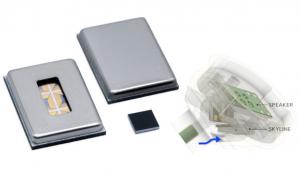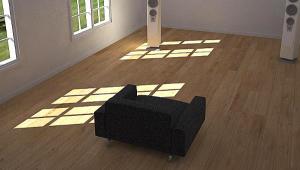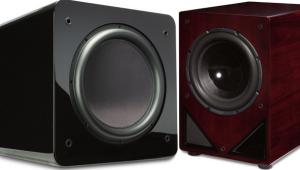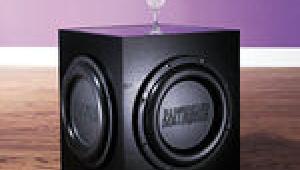Speaker Technology Primer
Like everything else in audio, there are so-called open-baffle designs that effectively defy this box speaker "convention." Some even use conventional woofers, but most employ large, thin, electrostatically- or dynamically-driven diaphragms. Our discussion here, however, will be limited to conventional driver-in-a-box designs.
Speakers can be divided into categories relating to their physical design. That's the way you'll first experience them, and determines to a large extent if they will fit into your life and home. That's how we list them here.
Floorstanding
These speakers are generally designed to produce the widest frequency response and highest output. At their best, they can extend to be deepest bass, though not always with the same high-level bass capabilities as a dedicated subwoofer. They can also accommodate multiple drive units, such as one or more woofers, a midrange, and a tweeter.
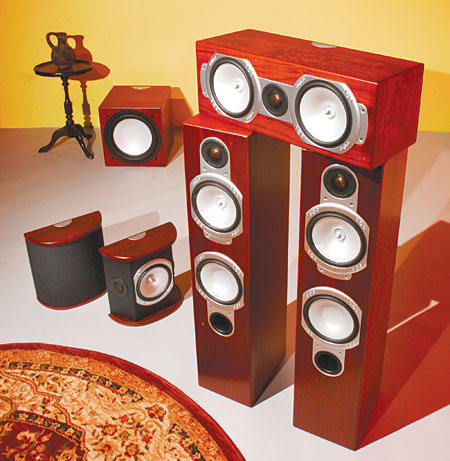
But it generally costs money to do all of these things well. The woofers tend to be large (or multiple, smaller woofers are used—a popular configuration today). More drivers require a more complex crossover. And a bigger cabinet ups the built cost considerably, not to mention the added shipping expense.
Yes, there are relatively economical floorstanding speakers that perform well. If you're shopping in a more bank account friendly price range, say, at or under $1,500/pair, you'll want to consider those. They often take up little more floor space than a compact speaker on a stand.
Many of today's more affordable floorstanding speakers, however, do not quite fit into the "bigger, deeper, and louder" category. These models are sometimes referred to as "Lifestyle" designs and are usually characterized by tall, very slender cabinets, often formed of metal (usually aluminum). They invariably need to be combined with a good subwoofer for full range operation. While these speakers can sound good, the laws of physics make that happy outcome more elusive than in a floorstanding design in a conventional box.
Compact
Compact speakers have long been the most popular style. They range in price from Wal-Mart cheap to "I can't believe they cost that much." Up to a point, as with all things, you get what you pay for, but beyond that point it's every speaker for itself.
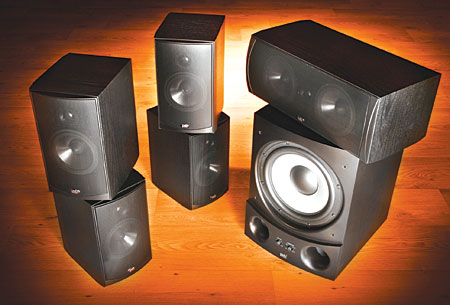
While there are "large" compact speakers, most of them tend to be 1-2 feet in their maximum dimension. They are usually (but not always) two-way designs with one or two woofer-midrange driver(s) and a single tweeter.
Compact speakers are often referred to as "bookshelf" models. But that designation is somewhat misleading since most serious "bookshelf" speakers were not designed to be used in a bookshelf at all! Instead, they work best when placed upright on good (sometimes costly) stands and located a couple of feet or more away from any nearby walls—including the wall behind them.
Incidentally, the away-from-the-wall recommendation will help you get the best sound from most freestanding speakers of any description.
While good compact speakers are a fine choice for home theater, you'll need to combine them with a good subwoofer if you plan on anything other than classic films and romantic comedies in your home theater diet.
In-wall/On-wall
In-wall speakers can be as simple as a basic two-way design or as complex—and expensive—as the largest floorstanding models.
Mounting speakers in the wall offers definite space-saving advantages. Decorators love them. The best of the breed can sound very good—high-end, even. But in general it's safe to say that in-wall speakers, while far better today than their early counterparts of just a few years ago, are still sonically compromised compared to the best floorstanders and bookshelf designs.
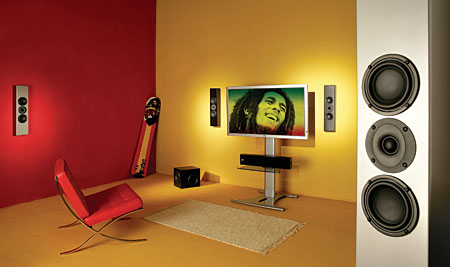
Why? Primarily because of things beyond a speaker designer's control. The space available in the wall cavity is seldom suitable for proper loading of the woofer. The cavity can also add coloration. Then there's the wall itself, which was never designed with the sort of vibration resistance common to good speaker cabinets.
Some in-wall designs include a shallow, sealed box behind the drivers, loading the speaker into that space rather than into a wall cavity of unknown size. That's a worthwhile feature to look for, but the depth of the box is still limited to the depth of a 2x4 wall stud and the width of typical stud spacing.
Many audiophiles also feel that mounting drivers flush with a wall can compromise the subjective depth of the soundstage in-wall speakers can generate. Though there is undoubtedly a psychoacoustic component to this (your mind fights the idea of images coming from behind the front wall), some of it appears to be real.
But there's no denying the convenience of in-walls. And they can be a practical choice for surrounds. Just make sure that if you use in-walls on the sides and/or in the back, and freestanding speakers up front, the combination is a good acoustic match.
As for on-walls, you see them all the time these days in advertising photos, surrounding a trendy on-wall flat panel television. Many on-walls fall into the same "Lifestyle" category as the slender, metal-clad floorstanding speakers mentioned earlier. And mounted, as they are, close to a wall, on-wall speakers share some of the wall-proximity problems of in-walls, together with limited internal volume. On-walls (and, usually, in-walls too) must be combined with a good subwoofer to produce a system capable of producing respectable bass.
And if you choose either in-walls or on-walls, hire a competent installer. While you might be able to do it yourself, there's also a good chance you'll end up with ugly holes in the wall that are the wrong size, or in the wrong place, for the speakers you just bought. Not to mention the chances of hitting a hidden mother lode—a water pipe or electrical conduit!
- Log in or register to post comments
